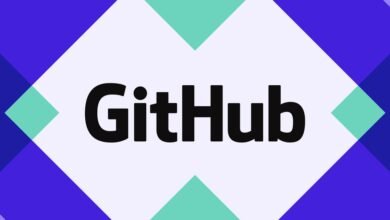Small Language Models: AI21’s Edge AI Breakthrough

▼ Summary
– AI21 has launched Jamba Reasoning 3B, a compact 3-billion-parameter open-source model that supports a 250,000-token context window and runs efficiently on consumer devices.
– The model is designed for decentralized AI, enabling on-device applications and hybrid setups where simple tasks are handled locally and complex ones are sent to the cloud.
– Jamba Reasoning 3B achieves a record context window for open-source models and processes over 17 tokens per second even with full-length inputs, outperforming many larger models.
– Its hybrid architecture combines transformer and Mamba layers, reducing memory usage to one-tenth of traditional transformers and improving speed by minimizing reliance on the KV cache.
– The model is open source under Apache 2.0, available on platforms like Hugging Face, and aims to promote cost efficiency, personalization, and broader accessibility in AI.
In a field often dominated by the pursuit of ever-larger models, AI21’s new Jamba Reasoning 3B offers a compelling alternative. This open-source model, with just 3 billion parameters, is engineered for high performance directly on consumer hardware like laptops and mobile phones. It supports an exceptionally large context window of 250,000 tokens, allowing it to process and reason over extensive documents, complex codebases, and lengthy conversations with remarkable speed and efficiency.
Ori Goshen, Co-CEO of AI21, envisions a more decentralized future for artificial intelligence. He suggests that while massive models will continue to have their place, the real transformative potential lies in powerful, compact models operating on local devices. This approach not only changes how AI is deployed but also reshapes its underlying economics. Jamba is specifically built for developers creating edge-AI applications and specialized systems that demand high efficiency without constant reliance on cloud infrastructure.
The model’s capabilities are impressive given its modest size. It tackles demanding tasks including mathematical problem-solving, programming, and logical reasoning. A key feature is its hybrid operational mode: straightforward tasks are processed locally on the device, while more computationally intensive problems are offloaded to powerful cloud servers. AI21 claims this intelligent distribution of workload can slash infrastructure costs for certain applications by an order of magnitude, making advanced AI more accessible and affordable.
Despite having only 3 billion parameters, Jamba Reasoning 3B sets a new benchmark for open-source models with its massive 250,000-token context capacity. To put this in perspective, leading proprietary models may offer longer contexts, but Jamba now holds the record among openly available alternatives, surpassing the previous high of 128,000 tokens set by larger models from Meta, Microsoft, and DeepSeek. Even when operating at its maximum context length, the model maintains a processing speed of over 17 tokens per second, a feat many competitors struggle with once inputs grow beyond 100,000 tokens.
This performance is made possible by a novel hybrid architecture that blends traditional transformer layers with more memory-efficient Mamba layers. This design significantly reduces the memory footprint, allowing the model to run on a tenth of the memory required by conventional transformers. By minimizing dependence on the memory-intensive KV cache, a component that often causes slowdowns with long sequences, Jamba achieves faster processing speeds, especially for extensive inputs.
An industry software engineer, who spoke on condition of anonymity, confirmed that this hybrid architecture provides distinct advantages in both speed and memory management. As generative AI increasingly runs on local machines, the demand for models that can handle long contexts swiftly without excessive memory consumption is critical. At 3 billion parameters, Jamba is perfectly positioned to meet these on-device requirements.
Available under the permissive Apache 2.0 license on platforms like Hugging Face and LM Studio, Jamba Reasoning 3B is accessible to a broad developer community. The release includes comprehensive guides for fine-tuning the model using an open-source reinforcement-learning platform named VERL, lowering the barrier for developers to customize the model for specific applications without prohibitive costs.
Goshen describes this launch as the start of a new family of small, efficient reasoning models. He emphasizes that scaling down enables greater decentralization, fosters personalization, and enhances cost efficiency. By empowering individuals and businesses to run capable models on their own devices, without the need for expensive data center GPUs, AI21 is helping to unlock a new economic model for artificial intelligence that promises wider accessibility and innovative applications.
(Source: Spectrum)





